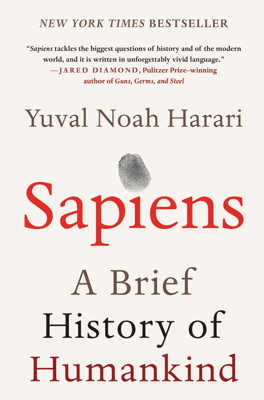The Flood
Overview of the Sapiens Expansion and Impact
Prior to the Cognitive Revolution, human species, including Homo sapiens, were confined to the Afro-Asian landmass. Despite earlier migrations to nearby islands, no human species had ventured into open seas or reached continents such as America and Australia. This changed significantly post-Cognitive Revolution, around 45,000 years ago, when Homo sapiens developed seafaring technologies and organizational skills necessary for transoceanic migrations. These early humans colonized Australia, adapting and eventually altering its ecosystem drastically.
Ecological Consequences in Australia
The colonization of Australia marked a pivotal ecological shift. Upon arrival, Homo sapiens encountered a host of megafauna species including a variety of large marsupials that had evolved in isolation and dominated the Australian ecosystem. Over the following millennia, these species went extinct, arguably due to the direct and indirect impacts of these new human settlers.
The Climate vs. Human Impact Debate concerns the cause of these mass extinctions. Some scholars suggest climate change, but evidence increasingly implicates human hunting and environmental manipulation (such as fire used to clear land and create favorable hunting grounds) as primary factors. The newly arrived humans, wielding simple but effective Stone Age technologies, likely overhunted slow-breeding large animals, which could not adapt swiftly enough to the new human presence or the drastically altered landscapes.
Wider Patterns of Human-Induced Extinctions
Following Australia, a similar pattern of colonization and associated mass extinctions occurred as Homo sapiens continued to expand their territory. The colonizations of the Americas around 14,000 BC led to comparable ecological disturbances. Large mammals like mammoths, native horses, and giant ground sloths, which thrived in the Americas prior to human arrival, soon faced extinction.
As in Australia, the evidence in America suggests that human arrival was a decisive component in these extinctions, despite some scholars also citing climate change as a contributing factor. These extinctions were not merely isolated occurrences but rather part of a continuous pattern observed wherever humans spread.
Conclusion: Reflection on Human Ecological Impact
These events underscore the profound impact Homo sapiens have had on the Earth's biodiversity. Long before industrialization, humans had been altering global ecosystems and biodiversity through their spread and activities. Historical patterns of extinction following human colonization highlight humans' role in ecological transformations, challenging notions of early humans living in harmony with nature.
This history serves as an important perspective on modern biodiversity crises, suggesting that understanding past impacts of human expansion could inform current conservation strategies. As contemporary activities threaten oceanic megafauna, reflecting on these historical patterns could reinforce the urgency to protect remaining species under threat.
